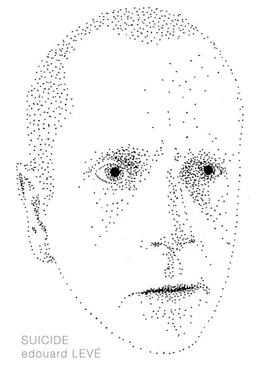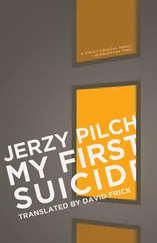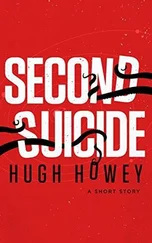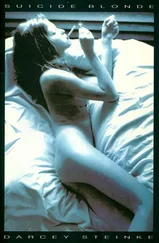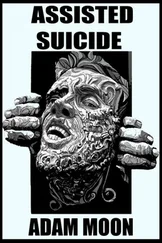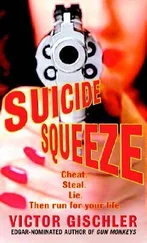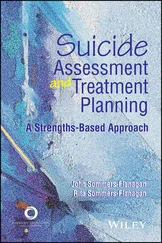Édouard Levé - Suicide
Здесь есть возможность читать онлайн «Édouard Levé - Suicide» весь текст электронной книги совершенно бесплатно (целиком полную версию без сокращений). В некоторых случаях можно слушать аудио, скачать через торрент в формате fb2 и присутствует краткое содержание. Город: Lonton, Год выпуска: 2011, ISBN: 2011, Издательство: Dalkey Archive Press, Жанр: Современная проза, на английском языке. Описание произведения, (предисловие) а так же отзывы посетителей доступны на портале библиотеки ЛибКат.
- Название:Suicide
- Автор:
- Издательство:Dalkey Archive Press
- Жанр:
- Год:2011
- Город:Lonton
- ISBN:978-1-56478-628-9
- Рейтинг книги:3 / 5. Голосов: 1
-
Избранное:Добавить в избранное
- Отзывы:
-
Ваша оценка:
- 60
- 1
- 2
- 3
- 4
- 5
Suicide: краткое содержание, описание и аннотация
Предлагаем к чтению аннотацию, описание, краткое содержание или предисловие (зависит от того, что написал сам автор книги «Suicide»). Если вы не нашли необходимую информацию о книге — напишите в комментариях, мы постараемся отыскать её.
, just a few days before he took his own life.
Suicide
Suicide
Suicide — читать онлайн бесплатно полную книгу (весь текст) целиком
Ниже представлен текст книги, разбитый по страницам. Система сохранения места последней прочитанной страницы, позволяет с удобством читать онлайн бесплатно книгу «Suicide», без необходимости каждый раз заново искать на чём Вы остановились. Поставьте закладку, и сможете в любой момент перейти на страницу, на которой закончили чтение.
Интервал:
Закладка:
Levé was born in 1965 and died in 2007 at the age of forty-two. He completed his university studies at a prestigious business school, the ESSEC in Paris. In 1991 he began painting. After a life-changing two-month trip to India in 1995, he renounced painting in favor of conceptual photography and writing. Levé referred to himself, flippantly but nonetheless tellingly, as a literary cubist. However, where the historical cubists were vibrant, Levé is austere; his works do not, as do the works of Braque or Picasso, explode the object to reveal its essence better than could a single perspective.
His photographs come in sets, each image arranged around a subject that acts as a center of gravity for the series as a whole. For example, the set called Rugby consists of a series of photos of men in business attire ostensibly playing the titular sport. The arrangement of figures in each shot is as banal as possible, recalling clichéd rugby photographs in a Sunday newspaper: a scrumhalf passing a ball to his backline from behind the scrum; a lineout at the moment of the throw-in; a team celebrating after a try. In Pornography , shot in a studio with monochrome white background and stark lighting, people are portrayed in a range of sexual positions requiring various degrees of gymnastic ability. The figures are fully dressed. Their faces, again, are impassive. In a series called Homonyms , Levé takes neutral frontal portraits of “ordinary” people who happen to share a name with someone famous. The faces of Yves Klein or André Breton, for example, are on display. But of course not the Yves Klein, or the André Breton. This gesture is repeated when the “you” of Suicide , walking through Bordeaux, sees on a brass plaque the words “Charles Dreyfus, Psychoanalyst.” Angoisse (Anguish), is a collection of shots of a peculiarly tranquil small French town by that name. Particularly memorable examples include photos of a sign proclaiming “Bienvenue à l’Angoisse” (Welcome to Anguish).
In each case, the photos cumulatively cement our feeling that names are not transparent. We do not think of this particular Yves Klein when the name “Yves Klein” pops up; the name “Paris” does not evoke the town we see in the photo; “Angoisse” is not a description of what we feel when looking at that town. These sets of images are not simply about something in the world—rugby, sex—but about (photographic) representations of these things—rugby photography, pornography. Levé ensures that we cannot see such images and naively believe in the objective realism to which photography all too easily lays claim: we no longer take such photos to show the truth about sex and rugby, we automatically see the conventions governing such images.
Levé’s writing and his photography reveal a single aesthetic, not dissimilar to that employed by both Suicide’ s narrator and its “you.” Journal (2004) takes the form of a newspaper: it is divided into sections, like “Internationale,” “Société,” “Sports,” “Culture,” and “Météo” (weather). Each of these sections contains articles, much like the ones to be found in any newspaper, except that they lack proper names: cities, countries, presidents, diseases, writers, and sports stars all appear anonymously. Like his photography, Levé’s writing here is stark and austere. He uses a doubly constrained form, choosing to adhere closely to the format of newspaper articles and choosing to eschew proper names, but nonetheless producing a diverse range of content.
There is a tension in Levé’s work between the unfinished, incomplete, or possible, and the finished, complete, or fixed. What is the difference between Amérique and the other, uncompleted, works described in Œuvres ? Suicide seems to suggest that neither Amérique , in its full material embodiment, nor the 532 other œuvres , still in their embryonic conceptual form, were truly fixed before October 15, 2007. Levé’s death retroactively changed the significance of all of his works. As Sartre famously argued, an oeuvre, with the death of its author, gains a certain coherence. Levé writes:
Only the living seem incoherent. Death closes the series of events that constitutes their lives. So we resign ourselves to finding a meaning for them. To refuse them this would amount to accepting that a life, and thus life itself, is absurd. Yours had not yet attained the coherence of things done. Your death gave it this coherence.
Levé’s death lends to his works the significance of augury. He writes:
The way in which you quit it rewrote the story of your life in a negative form. Those who knew you reread each of your acts in the light of your last. Henceforth, the shadow of this tall black tree hides the forest that was your life. When you are spoken of, it begins with recounting your death, before going back to explain it. Isn’t it peculiar how this final gesture inverts your biography?
And the effect of this “inverted biography” on us, his audience, is dramatic:
Your suicide has become the foundational act… Your final second changed your life in the eyes of others. You are like the actor who, at the end of the play, with a final word, reveals that he is a different character than the one he appeared to be playing.
The narrator of Suicide attributes to his “you” a strong desire for redemption in a single act, for a retroactive recasting of all his previous deeds in light of his final decision, for a reversal whereby the last would come first. Fittingly, his last work is his first work to appear in English.
Translating this work, I have benefited greatly from the institutional support provided by the American University of Paris, and particularly from its Master’s program in Cultural Translation. I am grateful to Anne-Marie Picard-Drillien and Lisa Damon for their help with difficult or colloquial passages in the French, and to Caitlin Dolan-Leach and Harriet Lye for their remarks on and suggestions for the English. I am indebted above all to my mentor Dan Gunn, who has generously pored over this translation with me from beginning to end, and from whom I never cease learning.
JAN STEYN, MARCH 2010About the Author and the Translator
EDOUARD LEVÉ was born on January 1, 1965 in Neuilly-sur-Seine. A writer, photographer, and visual artist, Levé was the author of four books of prose— Œuvres , Journal , Autoportrait , and Suicide —and three books of photographs. Suicide , published in 2008, was his final book.
JAN STEYN is a South African translator from French and Afrikaans into English. He is currently studying Comparative Literature at Emory University.
Copyright

Originally published in French as Suicide by P.O.L éditeur, 2008
Copyright © 2008 by P.O.L éditeur
Translation and afterword copyright © 2011 by Jan Steyn
All rights reserved
Library of Congress Cataloging-in-Publication Data
Levé, Edouard.
[Suicide. English]
Suicide / Edouard Levé; translated and with an afterword by Jan Steyn.—1st ed.
p. cm.
ISBN: 978-1-56478-628-9
1. Suicide—Fiction. I. Steyn, Jan H. II. Title.
PQ2712.E87S8513 2011
843’.92—dc22
2010044114
Partially funded by the University of Illinois at Urbana-Champaign, as well as by grants from the National Endowment for the Arts, a federal agency, and the Illinois Arts Council, a state agency

Cet ouvrage a bénéficié du soutien des Programmes d’aide à la publication de Culturesfrance/Ministère français des affaires étrangères et européennes
Читать дальшеИнтервал:
Закладка:
Похожие книги на «Suicide»
Представляем Вашему вниманию похожие книги на «Suicide» списком для выбора. Мы отобрали схожую по названию и смыслу литературу в надежде предоставить читателям больше вариантов отыскать новые, интересные, ещё непрочитанные произведения.
Обсуждение, отзывы о книге «Suicide» и просто собственные мнения читателей. Оставьте ваши комментарии, напишите, что Вы думаете о произведении, его смысле или главных героях. Укажите что конкретно понравилось, а что нет, и почему Вы так считаете.
